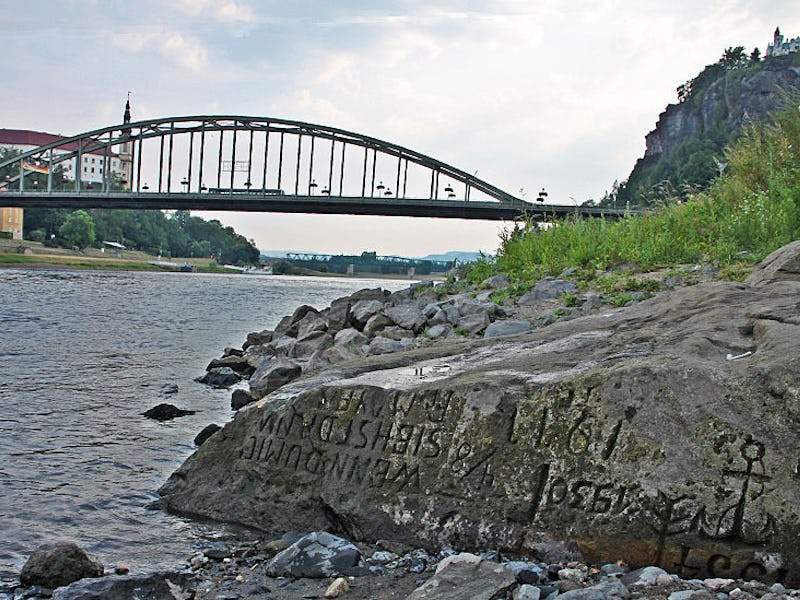Europe’s Worsening Drought Reveals Ominous Message in Czech ‘Hunger Stones’
"If you see me, weep."

The severe drought ongoing in Europe has caused ancient “hunger stones” to emerge from the Elbe River in the Czech Republic. The eerie stones were carved during similar droughts hundreds of years ago and serve as an omen of hard times. To today’s scientists, their appearance can give clues to historical weather pattern changes, helping us understand how today’s droughts compare to those of the past.
The dozen or so hunger stones, which are usually submerged in the river, were used by ancient Europeans to record dwindling water levels. The rocks are detailed in a 2013 study, published in the journal Climate of the Past, on ancient droughts in central Europe and have been inscribed numerous times over the centuries.
“The basic inscriptions warn of the consequences of drought: Wenn du mich siehst, dann weine [‘If you see me, weep.’],” the researchers wrote. “It expressed that drought had brought a bad harvest, lack of food, high prices and hunger for poor people.”
The Elbe in less dire times.
The stones record droughts in 1417, 1616, 1707, 1746, 1790, 1800, 1811, 1830, 1842, 1868, 1892, and 1893. According to the paper, although more recent droughts in the 21st century have been hard, they were not as large or long-lasting as earlier ones.
There is, however, one major difference that could make modern droughts more dangerous than those from the times when the hunger stones were first carved. According to a study in Nature in June, today’s droughts are also associated with record high surface temperatures, which earlier civilizations did not have to deal with. These high temperatures crack the soil, making farming even more difficult.
The European Drought Observatory (EDO) described the current European drought as “an extensive and severe anomaly” affecting central and northern Europe. Latvia and Lithuania declared states of emergency earlier this summer due to the low rainfall. Farmers are struggling to produce crops, and many are at risk of declaring bankruptcy.
Hunger stones upstream in Dresden, Germany.
In ancient times, droughts meant more than just bankruptcy. As explained in a study released in Science earlier in August, an extended drought may have sparked the downfall of one of the most powerful empires in human history, The Mayans. The study showed that rainfall in the area where the Mayans once ruled stopped about the same time that people abandoned these cities. Although there is no way to determine for sure, the researchers suggest that the drought, which decreased annual rainfall by as much as 70 percent, may have been the catalyst for the empire’s fall.
But that drought, as with others in the past were a natural part of life caused by weather patterns. More recent research makes it clear that modern droughts are the result of aridification — the drying of the Earth — which in turn is caused by rising temperatures. Unfortunately, experts speculate that as global warming worsens and worldwide temperatures continue to rise, we will see an increase in these devastating droughts and their catastrophic consequences.